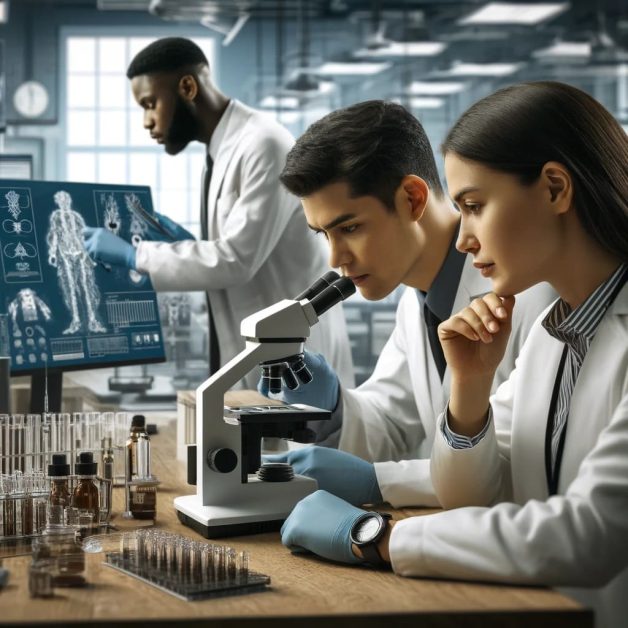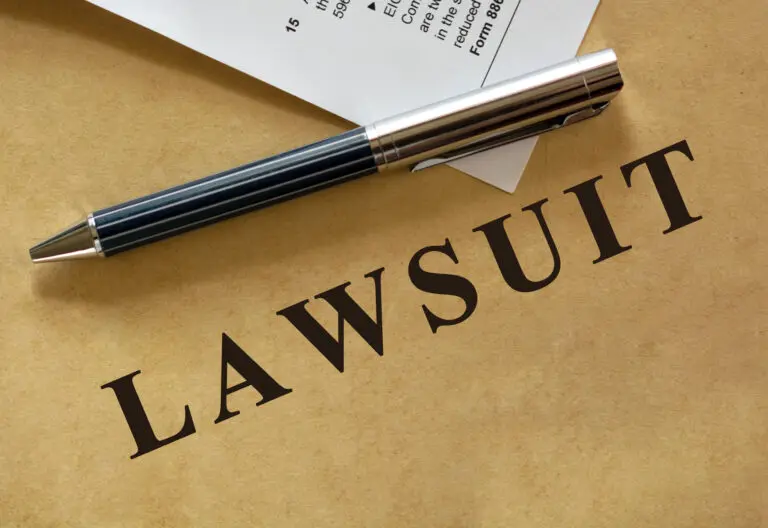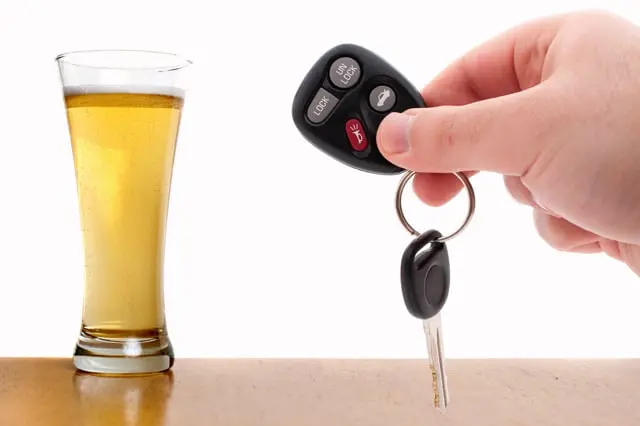The Fundamentals of Forensic Science Forensic science plays a pivotal role in the justice system by providing crucial evidence that can lead to the prosecution or exoneration of suspects. It encompasses various disciplines, such as DNA analysis, fingerprinting, and balística. Each method offers unique insights that help aplicación de la ley agencies solve complex cases. For instance, DNA evidence can link a suspect to a crime scene with a high degree of accuracy, often pivotal in cases of assault or murder.
The development of forensic technology has significantly enhanced the ability of detectives and prosecutors to present clear, indisputable evidence in court. As technology evolves, the scope and accuracy of forensic investigations expand, making it an ever-more essential element of justicia penal.
Techniques and Technologies in Forensics One of the most transformative advancements in forensics is the use of digital forensics, which involves the recovery and investigation of material found in digital devices. This can include tracing hackers through cybersecurity measures or recovering deleted messages from a suspect’s phone. Digital forensics specialists play a crucial role in solving crimes that involve electronic data.
Another critical area is toxicology, where experts analyze biological samples to detect the presence of drugs, alcohol, or poisons. This information can be vital in cases of suspected drug overdose, poisoning, or to establish impairment in vehicular accidents. The accurate results from toxicology reports often hold substantial weight in legal proceedings, underlining the importance of this discipline within forense.
Real-World Applications and Case Studies Forensics has been instrumental in revisiting and solving cases that were cold for years. Through techniques like forensic genealogy, aplicación de la ley can now identify suspects or victims through mere traces of DNA, long after the crime occurred. This application of ciencia forense not only brings closure to unresolved cases but also ensures that justice is served, even if delayed.
Illustrative of the power of forensics is the case of the Golden State Killer, a serial offender who evaded capture for decades. Through a combination of Pruebas de ADN and genealogical research, investigators were able to identify and apprehend the suspect, Joseph James DeAngelo, in 2018. This case underscores the critical role of forensic evidence in modern law enforcement and its potential to solve complex, long-standing mysteries.
Retos y consideraciones éticas Despite its successes, the field of forensics is not without challenges. Issues such as the potential for lab errors, evidence contamination, and the misinterpretation of forensic data can lead to miscarriages of justice. Therefore, maintaining stringent quality controls and continuous training for forensic analysts are paramount to ensure the reliability of forensic results.
Furthermore, ethical considerations are ever-present in forensic science. The handling of sensitive data, respecting the privacy of individuals, and the use of forensic evidence in court all require meticulous ethical considerations to balance the pursuit of justice with the rights of those involved.
Casos prácticos o ejemplos In forensic science, real-world applications have dramatically showcased its capabilities. For example, in the infamous O.J. Simpson trial, forensic evidence, particularly DNA testing, played a controversial role in the courtroom. More recently, forensics helped solve the decades-old murder of Angie Dodge. After wrongful conviction, DNA evidence collected at the crime scene was later used to exonerate Chris Tapp and identify the true perpetrator, Brian Dripps, who confessed to the crime. These cases emphasize how forensic advancements can influence legal outcomes dramatically.
Another notable application of forensics involves arson investigations. By analyzing fire debris, forensic chemists can identify accelerants used to start fires, which led to the conviction of a serial arsonist in New Jersey. His pattern was detected through meticulous forensic analysis, underscoring the vital role of this discipline in solving crimes involving fire.
Análisis comparativo Comparing forensic practices across different jurisdictions can reveal significant differences in how evidence is collected, analyzed, and presented in court. For instance, in the United States, the FBI operates a sophisticated forensic laboratory that supports local and state law enforcement agencies, whereas in the United Kingdom, forensic services have been privatized, leading to concerns about consistency and quality control. Both systems have their merits and challenges, impacting the efficiency of criminal investigations and the fairness of trials.
In terms of forensic technology, the use of Polygraph tests varies widely. In the US, these are commonly used during criminal investigations but are generally inadmissible in court. Conversely, in some other countries, such as Canada and India, polygraph results can be admitted as evidence under certain conditions, highlighting different legal standards and practices.
Desglose detallado de las consecuencias jurídicas The use of forensic evidence in procedimientos judiciales can have profound implications. If evidence is mishandled or contaminated, it can lead to wrongful convictions or the acquittal of guilty parties. For example, forensic mishandling in the case of Amanda Knox, who was initially convicted for murder in Italy, led to significant legal debates and her eventual acquittal after forensic errors were revealed.
Moreover, the advent of DNA databases raises legal and ethical questions about privacy and consent. Individuals who have never committed a crime may have their DNA included in a database simply because they were related to someone of interest in a case, which can lead to legal challenges concerning civil liberties.
Guía paso a paso con imágenes Creating a forensic report involves several critical steps. Initially, evidence must be securely collected and documented at the crime scene. Photographs, notes, and physical measurements are all taken meticulously. After collection, the evidence is analyzed in the lab using various techniques, depending on the nature of the evidence. For example, blood samples are tested for DNA, while firearms are examined for ballistics matches.
Visual aids such as diagrams and photos can help explain the process of análisis de pruebas, such as how DNA is extracted from a sample and compared to known profiles in a database. These visuals not only aid in understanding but also serve as crucial tools in court to help jurors comprehend complex forensic procedures.
Tecnología y herramientas Recent advancements in forensic technology include the development of portable spectrometers that allow for immediate analysis of substances at the crime scene. Another innovative tool is the use of 3D imaging to reconstruct crime scenes or accidents, providing juries with a virtual walkthrough of the scene.
Moreover, forensic software has revolutionized how data is analyzed and stored. Programs like the Combined DNA Index System (CODIS) enable quick comparison of DNA data across an international network, speeding up the process of matching DNA samples with potential suspects.
Elementos interactivos To make forensic science more accessible, interactive online platforms offer virtual tours of a forensic lab or crime scene, where users can explore different forensic techniques. Additionally, interactive databases provide examples of how forensic evidence is used to solve crimes, which can be a valuable educational tool for students and professionals alike.
Sección FAQ
- What is the most reliable type of forensic evidence?
- DNA evidence is considered one of the most reliable forms of forensic evidence due to its specificity and the difficulty in tampering with it.
- How long can DNA evidence last at a crime scene?
- DNA can last for many years under the right conditions, though environmental factors like moisture and heat can degrade it.
- Can forensic evidence be wrong?
- Yes, forensic techniques are not infallible. Human error, contamination, and misinterpretation of results can lead to incorrect conclusions.
Cambios y tendencias legislativas In recent years, there have been significant legislative efforts to regulate the use of forensic evidence and ensure its reliability. For instance, new laws require forensic labs to obtain accreditation and forensic analysts to undergo regular proficiency testing. Trends also point towards greater transparency in the use of forensic techniques, with calls for databases that track the use and outcomes of forensic evidence in legal cases.
Consideraciones éticas Forensic science intersects with ethical considerations, especially regarding the handling of genetic material and personal data. Ensuring informed consent when collecting DNA samples and respecting the privacy of individuals whose information is stored in forensic databases are paramount concerns.
Type of Attorney for This Type of Legality to Represent the Client and How to Find Them on Attorneys.Media In cases involving complex forensic evidence, a abogado penalista with expertise in forensic science is crucial. These attorneys are skilled in challenging the admissibility and accuracy of forensic evidence presented by the prosecution.
On Attorneys.Media, you can find specialized legal experts by searching for ‘forensic science attorneys’ or ‘criminal defense attorneys with forensic expertise.’ It is advisable to review the profiles of these attorneys, which include their experience, past cases, and client reviews. Further, many attorneys on this platform provide introductory videos explaining their approach to forensic cases, which can be an excellent way to gauge their suitability for your needs.
Before choosing an attorney, consider arranging a consultation, which many attorneys on Attorneys.Media offer for free or a reduced fee. This meeting can provide insights into the attorney’s approach and how they might handle your case, ensuring that you are well-represented in any proceedings involving forensic evidence.
Conclusión Forensics is a cornerstone of the sistema de justicia penal, providing essential evidence that supports the investigation and prosecution of crimes. As technology advances, so too will the capabilities of forensic science, further cementing its role in law enforcement and legal proceedings. For anyone involved in or interested in the legal field, understanding the scope and impact of forensics is crucial for appreciating how modern law enforcement solves crimes and administers justice.









